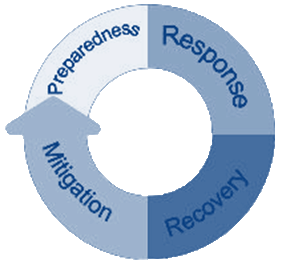In the era of “five nines” of reliability, contact center leaders didn’t worry too much about the resiliency of their technology: it was always up. Yet several factors have elevated the need for improved contact center resiliency:
- Delayed technology investments come home to roost when a formerly reliable machine starts to have bad days, or an unexpected peak impacts system performance.
- A center may have contracted for cloud services without considering reliability or how the vendor will stand behind its offering, and found out too late that the performance wasn’t what was expected.
- Complex architectures, whether premise or cloud, can introduce multiple vendors and single points of failure, leading to finger pointing rather than rapid resolutions and root cause analysis.
- When customers can’t reach the center, they’ve got a rather large stage on which to vent their frustrations!
Centers are increasingly aware of the need to “fix” these issues but don’t always have the time, resources, and funding to do so. If your center is mission critical and you aspire to be “best-in-class” (or remotely close to it), resiliency is an imperative, not an option.
 As a starting point to defining your requirements, consider what would happen if you lost your contact center technology for minutes, hours, or more. Maybe you think you can endure a short blip, but consider what happens next. A few minutes outage can leave the center playing catch up on service level (and perhaps, customer satisfaction) all day. If minutes turn into hours, or become too frequent, where will customers turn for assistance? What would the impact be on other channels or departments? Who would hear about it, and how? Would you risk losing business – whether short term sales, or longer term loyalty? Would your customer take to the “airwaves” of social media, risking brand damage? You get the idea.
As a starting point to defining your requirements, consider what would happen if you lost your contact center technology for minutes, hours, or more. Maybe you think you can endure a short blip, but consider what happens next. A few minutes outage can leave the center playing catch up on service level (and perhaps, customer satisfaction) all day. If minutes turn into hours, or become too frequent, where will customers turn for assistance? What would the impact be on other channels or departments? Who would hear about it, and how? Would you risk losing business – whether short term sales, or longer term loyalty? Would your customer take to the “airwaves” of social media, risking brand damage? You get the idea.
Smart leaders consider many factors in defining resiliency requirements. They work with IT to define scenarios and how redundancy and resiliency can prevent and mitigate the more likely ones.
Start with the voice and data networks, seeking to eliminate single points of failure in connectivity to carriers and your LAN, WAN, internet, MPLS, etc. Chances are you need some resiliency built into your core routing and reporting. Most think of voice first, but centers increasingly need to consider other media as well. That can be more complicated if different solutions route the various media versus an integrated routing and reporting engine.
Most workforce optimization tools (WFM, QM, etc.) don’t need to be redundant, but think about how long you can they be without them. If you’re large, you probably can’t live too long without your WFM without risking some serious inefficiencies. Those with regulatory or compliance demands need to ensure recordings are always captured and perhaps backed up or duplicated in real-time.
If your IVR carries a heavy workload (e.g., financial services, utilities), you probably want some redundancy and geographic diversity on the ports. CRM or a core system may be mission critical for some, as it is important to track contact records and not risk losing that history. This one can be tricky if it is the system of record. When it is down, other solution availability can become moot if agents can’t address customer needs anyway. So, it may be the starting point to form the baseline of center availability.
If you are embarking on a vendor evaluation and want to consider redundancy and resiliency, here are some key questions to ask. Choose the pertinent ones based on the sourcing approach and the vendor’s scope. And if the solutions aren’t the vendor’s responsibility, ask your IT department!
- Where are the data centers (DCs)? How diverse are they? (e.g., geography, power grids)
- Who owns/provides the DCs? (Vendor or third party or infrastructure/platform provider)
- How are the DCs secured? Address physical and network access.
- What network connectivity options do they offer? (Address carriers, physical paths, failover, etc.)
- What are the single points of failure? What options are offered to minimize risks?
- Does the system transition to backup automatically? Or does transition require manual activity? (and if so, who does what?) Is the data duplicated? Do agents have to login again?
- Are calls in progress maintained? Are calls in queue maintained?
- What are the SLAs? Remediation?
Remember, you need to dive into what a vendor means, as definitions can vary and you know what happens if you assume!
Want to learn more? Read the full article »
